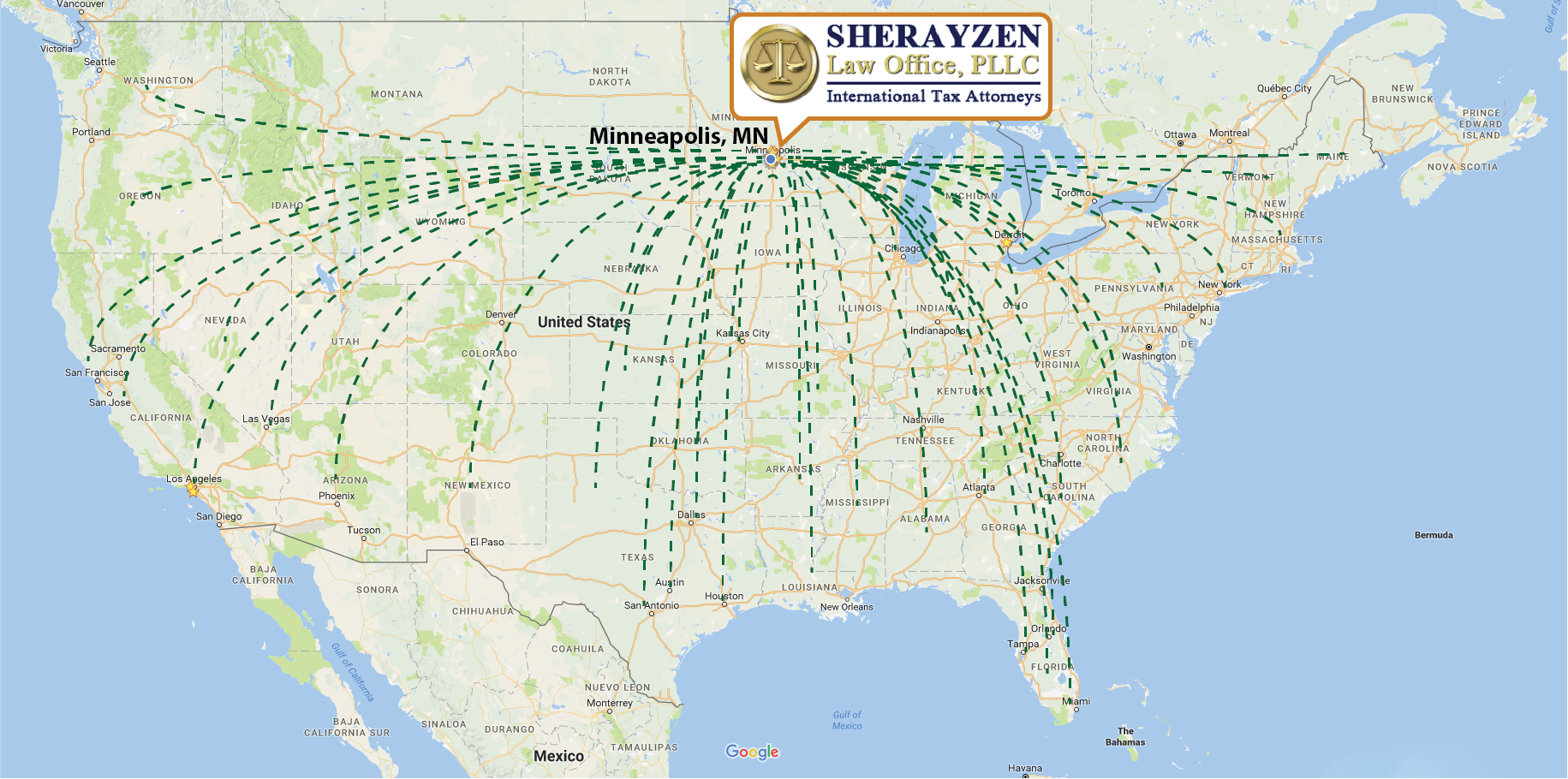US Tax Residency | International Tax Lawyer
Hello, and welcome to Sherayzen Law Office video blog. My name is Eugene Sherayzen; I’m an International Tax Attorney, founder and owner of Sherayzen Law Office, Ltd.
Today, I would like to discuss with you one of the most fundamental concepts of US International Tax Law: US Tax Residency. Specifically, US Tax Residency for Individuals, in the context of the US Income Tax only.
When a Client comes into my office, one of the first things I want to find out about him is whether he’s considered a US Tax Resident or a US Person. For our purposes, these concepts are interchangable.
Why is that important? If he’s a US Tax Resident, then a whole avalanche of US Tax Reporting Requirements apply to him: the Worldwide Income Requirement, the FBAR, Form 8938, 8621, 5471 etc. etc. On the other hand, if he is not a US Tax Resident, then none of these requirements would apply to him.
How do we figure out if a Client is a US Tax Resident? There are three categories of US Tax Residents. The first are US Citizens; a US Citizen is always a US Tax Resident. This is dramatically different from almost all other countries in the world except Eritrea.
In the majority of other jurisdictions, if a citizen resides outside of their country, then he’s a resident of that country, not a resident of the home country. The United States is different; if a US Citizen resides in another country, he is still a Tax Resident of the United States. He can reside on the moon; he can reside on Mars; he is still a US Tax Resident.
The second category of US Tax Residents consists of US Permanent Residents. A US Permanent Resident is always a US Tax Resident. At this point it’s important to clear up a confusion that exists regarding the concepts of US Tax Residency versus US Permanent Residency. A US Permanent Resident, as I said, is always a US Tax Resident; but a US Tax Resident can be a person who is not a US Permanent Resident and not a US Citizen. It is important to distinguish between these two concepts and not to confuse them.
Let’s turn to the final category of US Tax Residents: Foreign Persons who satisfied the requirements of the Substantial Presence Test. Under the Substantial Presence Test, a Foreign Person is considered to be a US Tax Resident if he is physically present in the United States for at least 183 days in the past three years. The calculation of the 183 days is a little bit peculiar; you take all of the days that you spend in the current year and plus 1/3 of the days you spent in the prior year, plus 1/6 of the days that you spent in the year before that.
Let’s use an example to illustrate how the Substantial Presence Test works. Let’s say Pierre, a citizen of France is sent by his company to work in the United States for one hundred twenty days in each of the years: 2014, 2015 and 2016 on an L1 Visa. We are trying to figure out whether Pierre is a US Tax Resident in the year 2016. For these purposes, we will take 1/6 of the days he spent in the United States in the year 2014 which is 120 divided by 6 = 20 plus 1/3 of the days he spent in the United States in the year 2015 which is 120 divided by 3 = 40. Forty plus twenty = 60 plus all of the days he spent in the United States in the year 2016 which is 120 days; So 120 plus 60 = 180 which is below the 183 day threshold. This means that Pierre was not a US Tax Resident in the year 2016.
I hope that this short presentation has helped you clear up this important concept of US Tax Residency. Thank you for watching, until the next time.



